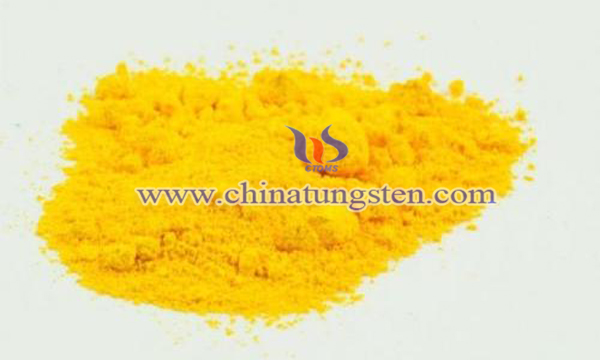Cadmium Sulfide -- Tungsten Trioxide Composite Photocatalyst
- Details
- Category: Tungsten Information
- Published on Saturday, 09 November 2019 23:26
Cadmium sulfide nanocrystals are the most widely studied and the most promising class of II-VI semiconductor nanocrystals. Due to their important nonlinear optical properties, luminescent properties and other physical and chemical properties, they have attracted worldwide attention. As a very important semiconductor material, it has been widely used in many fields, such as various light-emitting devices, laser and infrared detection devices, infrared windows and nonlinear optical materials and photosensitive sensors. Especially cadmium sulfide can absorb visible light very well, so it is the first choice material of photocatalyst.

However, cadmium is very easy to be corroded by light and has poor light stability, so it needs to be compounded with other materials with strong light stability. Among them, tungsten trioxide is a better synthetic material. The preparation method of cadmium sulfide tungsten trioxide composite photocatalyst is as follows:
(1) Preparation of tungsten trioxide
Weigh 150mg of tungsten borate powder and put it into a stainless steel reactor with 8ml of 2 m hydrofluoric acid water and ethanol mixed solution (the volume ratio of water and ethanol is 3:4) and polytetrafluoroethylene as the lining. After the reactor is sealed, it is heated in an oven at 190 ℃ for 36 hours, the reaction sample is taken out, cleaned with deionized water and dried at 80 ℃, then the bronze crystal of tungsten hydroxide is obtained, and then heated in air at 700 ℃ for 2 hours to obtain tungsten trioxide;
(2) Dissolve cadmium chloride and 3-mercaptopropionic acid in deionized water at a molar ratio of 1:1.65 to form a mixed solution, then add tungsten trioxide to the mixed solution, and then add sodium thiosulfate after nitrogen deaeration for 30 minutes. After mixing evenly, adjust the pH to 9 with 1mol / L sodium hydroxide solution, and react at 200 ℃ for 1.5 hours;
(3) The cadmium sulfide / W2O3 composite photocatalyst was obtained by centrifugation, washing and drying. XRD and XPS showed that the nano materials were cadmium sulfide-W2O3.
Compared with the prior art, cadmium sulfide / W2O3 composite photocatalyst has higher photocatalytic activity and stability, and its degradation rate of ciprofloxacin is over 88%.
- Tungsten Oxide Manufacturer & Supplier, Chinatungsten Online: www.tungsten-oxide.com
- Tungsten News & Prices of China Tungsten Industry Association: www.ctia.com.cn
- Molybdenum News & Price: news.molybdenum.com.cn
- Tel.: 86 592 5129696; Fax: 86 592 5129797; Email: sales@chinatungsten.com



 sales@chinatungsten.com
sales@chinatungsten.com